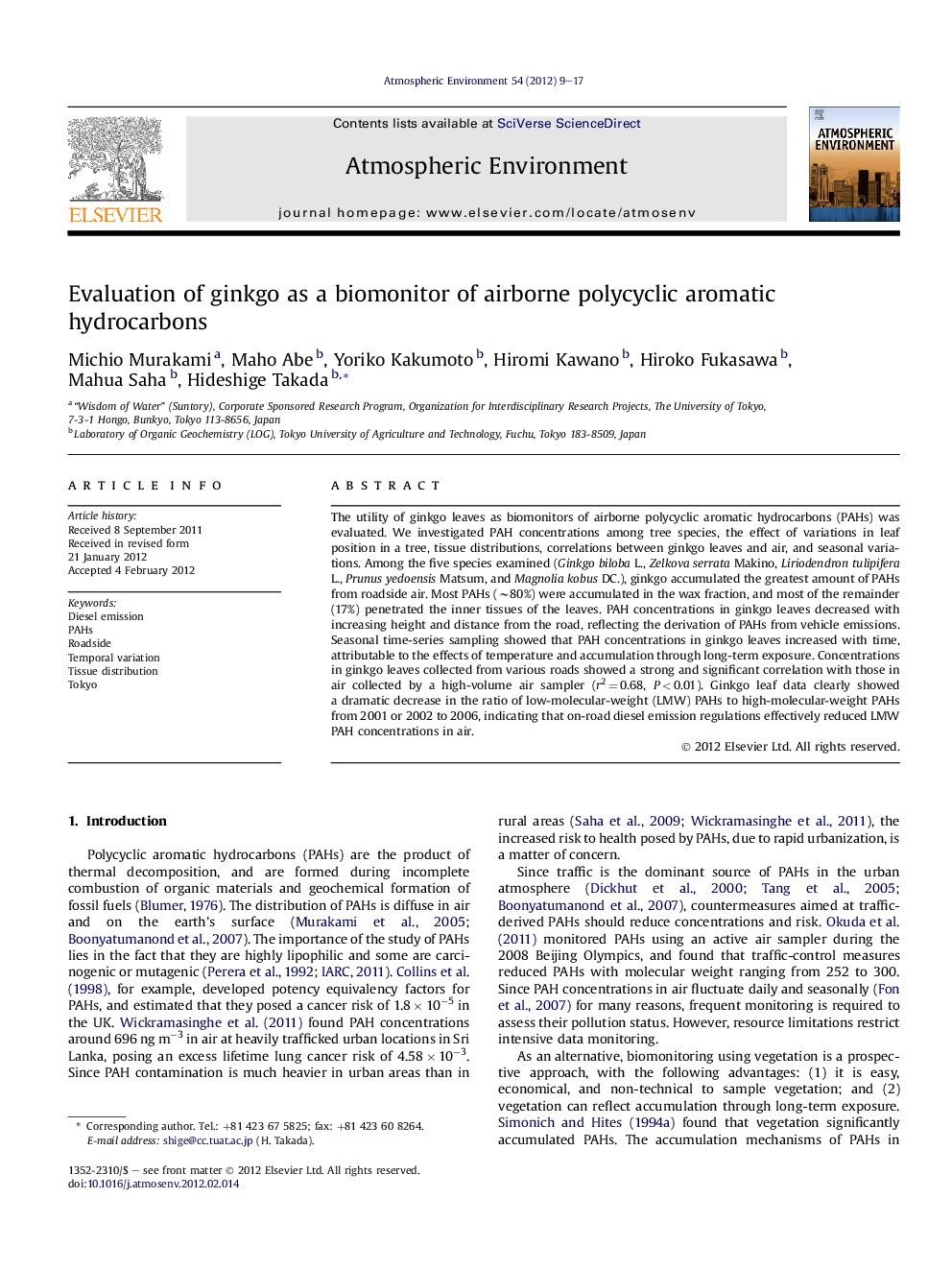| Article ID | Journal | Published Year | Pages | File Type |
|---|---|---|---|---|
| 4438765 | Atmospheric Environment | 2012 | 9 Pages |
The utility of ginkgo leaves as biomonitors of airborne polycyclic aromatic hydrocarbons (PAHs) was evaluated. We investigated PAH concentrations among tree species, the effect of variations in leaf position in a tree, tissue distributions, correlations between ginkgo leaves and air, and seasonal variations. Among the five species examined (Ginkgo biloba L., Zelkova serrata Makino, Liriodendron tulipifera L., Prunus yedoensis Matsum, and Magnolia kobus DC.), ginkgo accumulated the greatest amount of PAHs from roadside air. Most PAHs (∼80%) were accumulated in the wax fraction, and most of the remainder (17%) penetrated the inner tissues of the leaves. PAH concentrations in ginkgo leaves decreased with increasing height and distance from the road, reflecting the derivation of PAHs from vehicle emissions. Seasonal time-series sampling showed that PAH concentrations in ginkgo leaves increased with time, attributable to the effects of temperature and accumulation through long-term exposure. Concentrations in ginkgo leaves collected from various roads showed a strong and significant correlation with those in air collected by a high-volume air sampler (r2 = 0.68, P < 0.01). Ginkgo leaf data clearly showed a dramatic decrease in the ratio of low-molecular-weight (LMW) PAHs to high-molecular-weight PAHs from 2001 or 2002 to 2006, indicating that on-road diesel emission regulations effectively reduced LMW PAH concentrations in air.
►We evaluated the utility of ginkgo as a tool for biomonitoring PAHs in air. ► PAH concentrations in ginkgo were strongly correlated with those in air. ► PAHs in ginkgo were affected by temperature and long-term accumulation. ► Ginkgo accumulated PAHs derived from vehicle emissions. ► The data showed that diesel emission regulations reduced low molecular weight PAHs.
